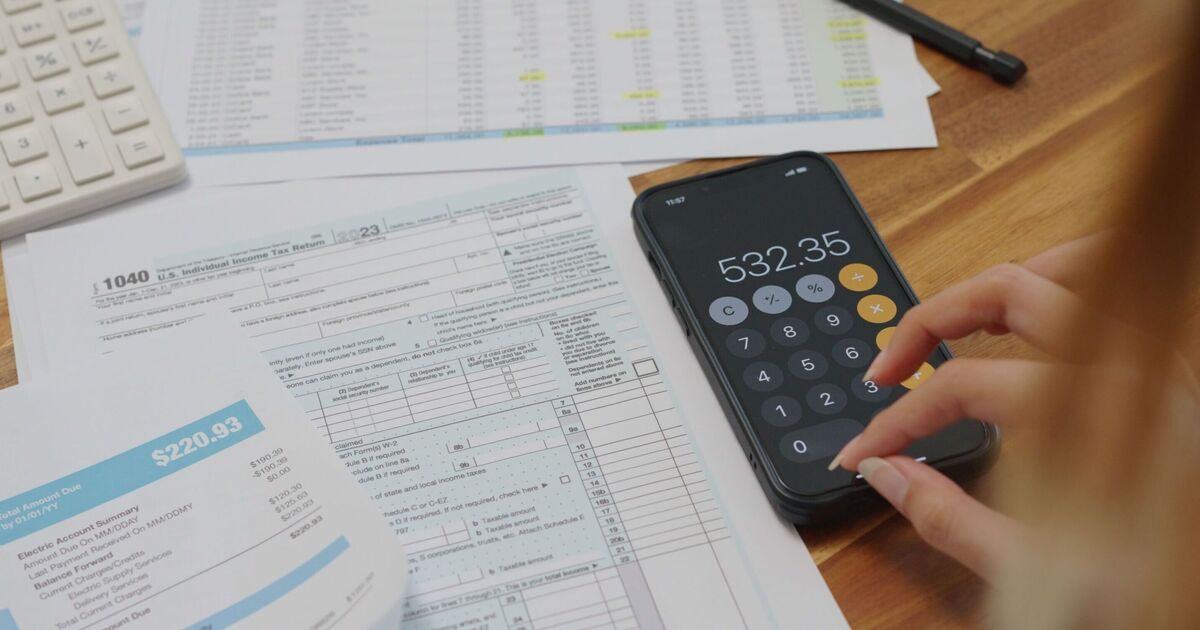Ever spotted the tax code printed on your payslip? Chances are, you may not have given it much thought, but this combination of letters and numbers is actually the key to knowing how much tax you’re paying on your income.
If it’s incorrect, you may be owed a refund worth thousands. While it’s easy to overlook the code each time your salary comes through, it’s your resposibility to check you’ve got the ‘right’ tax code to correspond with your general situaton.
HMRC calculates each individual number based on ‘your tax-free Personal Allowance and income you have not paid tax on’, including untaxed interest and part-time savings. The value of benefits, like a company car, is accounted for too.
The Government explains that ‘1257L’ is the code used for most people who have one job or a pension. The ‘L’ in this means you’re entitled to the standard tax-free Personal Allowance – being the amount you can earn annually before tax.
Currently, this value is £12,570. Drawing to an example, the Government explains: “You’re entitled to the standard tax-free Personal Allowance of £12,570, but you also get medical insurance from your employer. As this is a company benefit it lowers your Personal Allowance and changes your tax code.
“The medical insurance benefit of £1,570 is taken away from your personal allowance, leaving you with a tax-free Personal Allowance of £11,000. This would mean your tax code is 1100L.”
A full list of HMRC tax codes are as follows:
L: You’re entitled to the standard tax-free Personal Allowance
M: Marriage Allowance: you’ve received a transfer of 10% of your partner’s Personal Allowance
N: Marriage Allowance: you’ve transferred 10% of your Personal Allowance to your partner
T: Your tax code includes other calculations to work out your Personal Allowance
0T: Your Personal Allowance has been used up, or you’ve started a new job and your employer does not have the details they need to give you a tax code
BR: All your income from this job or pension is taxed at the basic rate (usually used if you’ve got more than one job or pension)
D0: All your income from this job or pension is taxed at the higher rate (usually used if you’ve got more than one job or pension)
D1: All your income from this job or pension is taxed at the additional rate (usually used if you’ve got more than one job or pension)
NT: You’re not paying any tax on this income
S: Your income or pension is taxed using the rates in Scotland
S0T: Your Personal Allowance (Scotland) has been used up, or you’ve started a new job and your employer does not have the details they need to give you a tax code
SBR: All your income from this job or pension is taxed at the basic rate in Scotland (usually used if you’ve got more than one job or pension)
SD0: All your income from this job or pension is taxed at the intermediate rate in Scotland (usually used if you’ve got more than one job or pension)
SD1: All your income from this job or pension is taxed at the higher rate in Scotland (usually used if you’ve got more than one job or pension)
SD2: All your income from this job or pension is taxed at the advanced rate in Scotland (usually used if you’ve got more than one job or pension)
SD3: All your income from this job or pension is taxed at the top rate in Scotland (usually used if you’ve got more than one job or pension)
C: Your income or pension is taxed using the rates in Wales
C0T: Your Personal Allowance (Wales) has been used up, or you’ve started a new job and your employer does not have the details they need to give you a tax code
CBR: All your income from this job or pension is taxed at the basic rate in Wales (usually used if you’ve got more than one job or pension)
CD0: All your income from this job or pension is taxed at the higher rate in Wales (usually used if you’ve got more than one job or pension)
CD1: All your income from this job or pension is taxed at the additional rate in Wales (usually used if you’ve got more than one job or pension)
Crucially, the Government also adds that patterns with ‘W1’, ‘M1’, or ‘X’ at the end are emergency codes. These are generally issued after a change of circumstance like a new job or getting company benefits or a State Pension.
Meanwhile, tax codes with ‘K’ at the beginning signal that your income is being taxed in a different way. This often takes place if you’re paying tax you owe from a previous year through your wages or pension, the Government explains.
If you think you’re overpaying tax and need a refund, you should head to the Government’s website to complete a form. According to RIFT, the average tax rebate amount in the UK is £3,000.
Checkout latest world news below links :
World News || Latest News || U.S. News
The post 21 HMRC payslip codes that may mean you’re owed money appeared first on WorldNewsEra.

